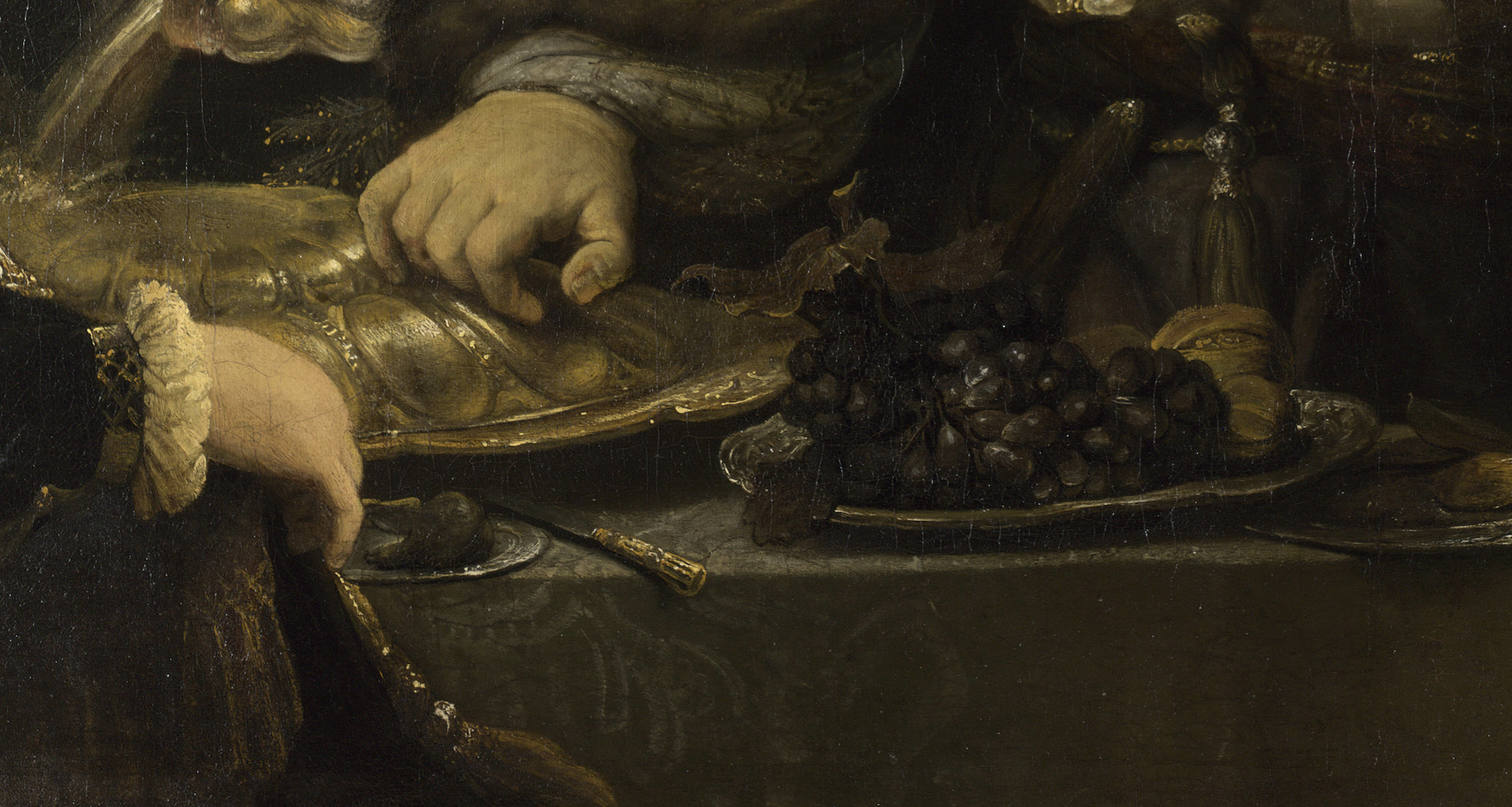Belshazzar's Feast: A Masterpiece of Drama and Prophecy by Rembrandt
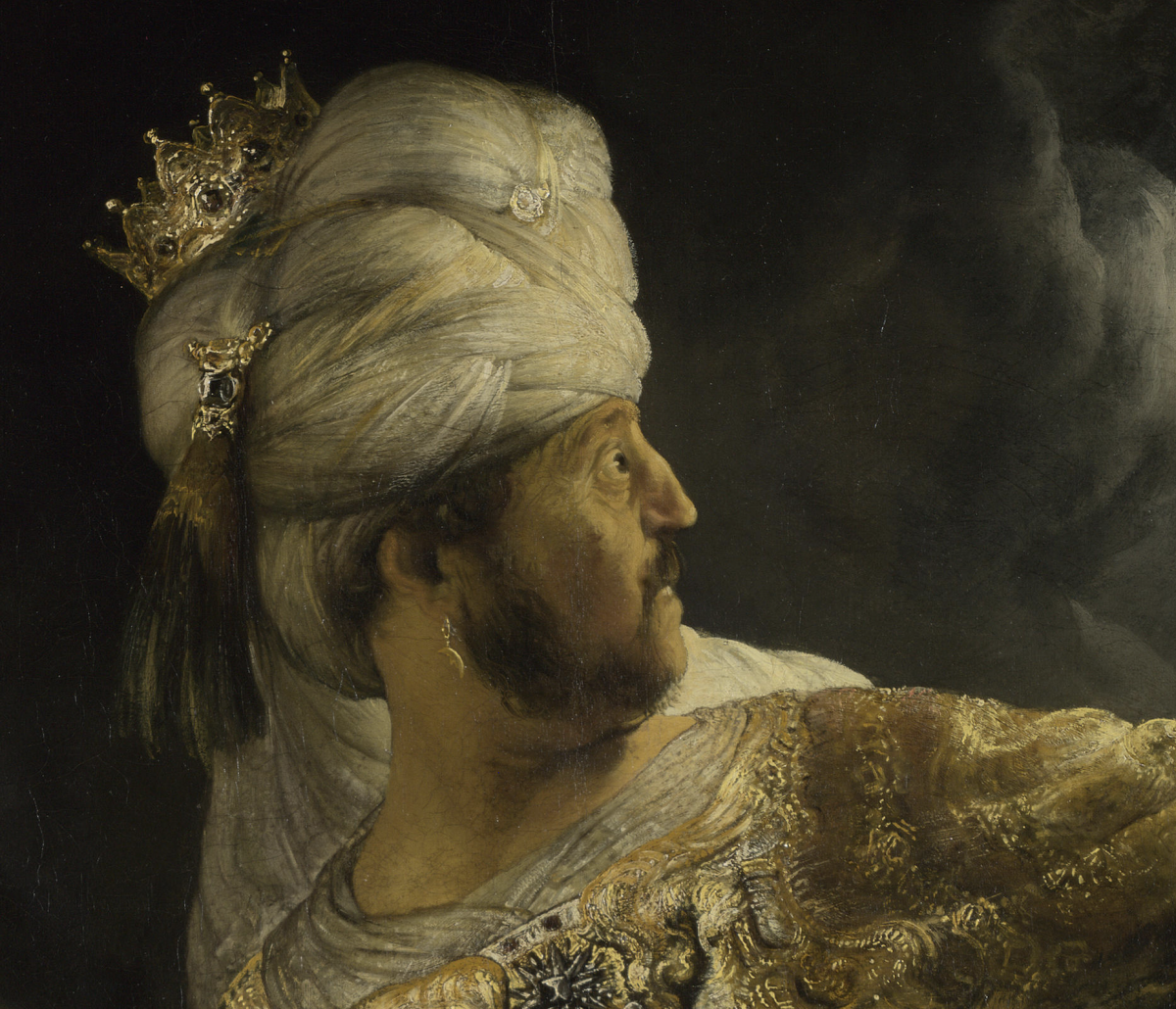
Belshazzar's Feast, one of Rembrandt Harmenszoon van Rijn's most captivating works, delves into the biblical narrative from the Book of Daniel. This dramatic scene, painted in 1635, remains an outstanding example of Rembrandt's prowess in storytelling through the medium of painting. It depicts the moment of divine retribution and human realization when a mysterious hand appears and writes on the wall during the Babylonian king's feast. Rembrandt's portrayal of this story goes beyond religious depiction and enters the realms of psychological analysis and deep symbolism.
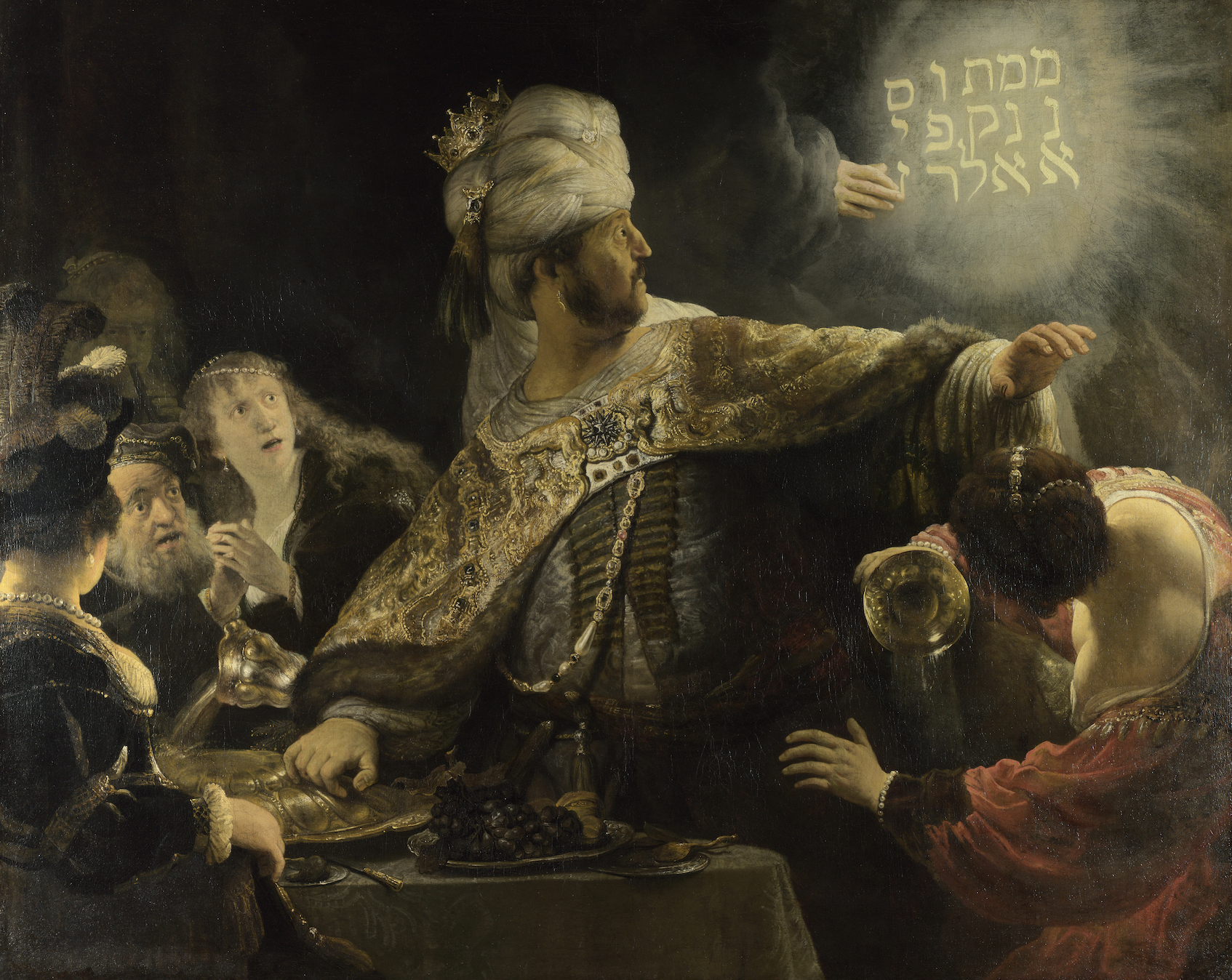
A Vivid Biblical Tale
The narrative of Belshazzar's feast is a gripping story of pride and consequence. According to the Bible, King Belshazzar held a grand feast where sacred vessels from the Temple of Jerusalem were profanely used for drinking wine. During the revelry, a disembodied hand appears and writes upon the palace wall, an event that terrifies the king and his guests. Unable to interpret the writing, Belshazzar calls upon the prophet Daniel, who reads the words "Mene, Mene, Tekel, Upharsin," foretelling the fall of Belshazzar's kingdom to the Medes and the Persians.

Rembrandt's Interpretation
In Rembrandt's interpretation, the scene is alive with tension and fear. The lavish setting, the opulent attire, and the expressions of horror on the faces of those present create a palpable atmosphere of foreboding. The painting is dominated by the contrast between the luxurious interior and the spectral hand that inscribes the fateful message in glowing letters. This contrast echoes the central biblical theme of the material world versus the divine.
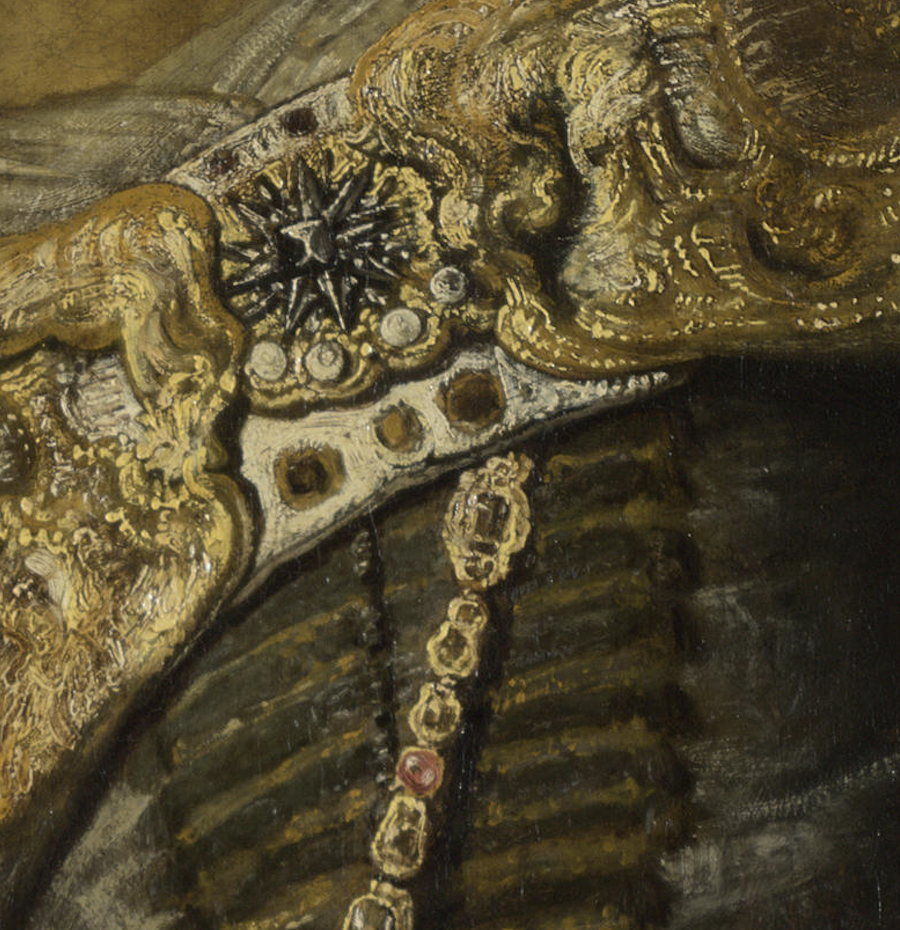
Mastery of Light and Color
Rembrandt's use of light is masterful and serves to heighten the drama. The hand appears bathed in a supernatural glow that casts eerie shadows and highlights on the faces and garments of the king and his guests. The painter's application of the 'chiaroscuro' technique, with its stark contrasts of light and dark, amplifies the sudden intrusion of the divine into the mortal revelry. The lavishness of the scene contrasts starkly with the bright, ghostly luminescence of the writing, drawing viewers' eyes directly to the portent.
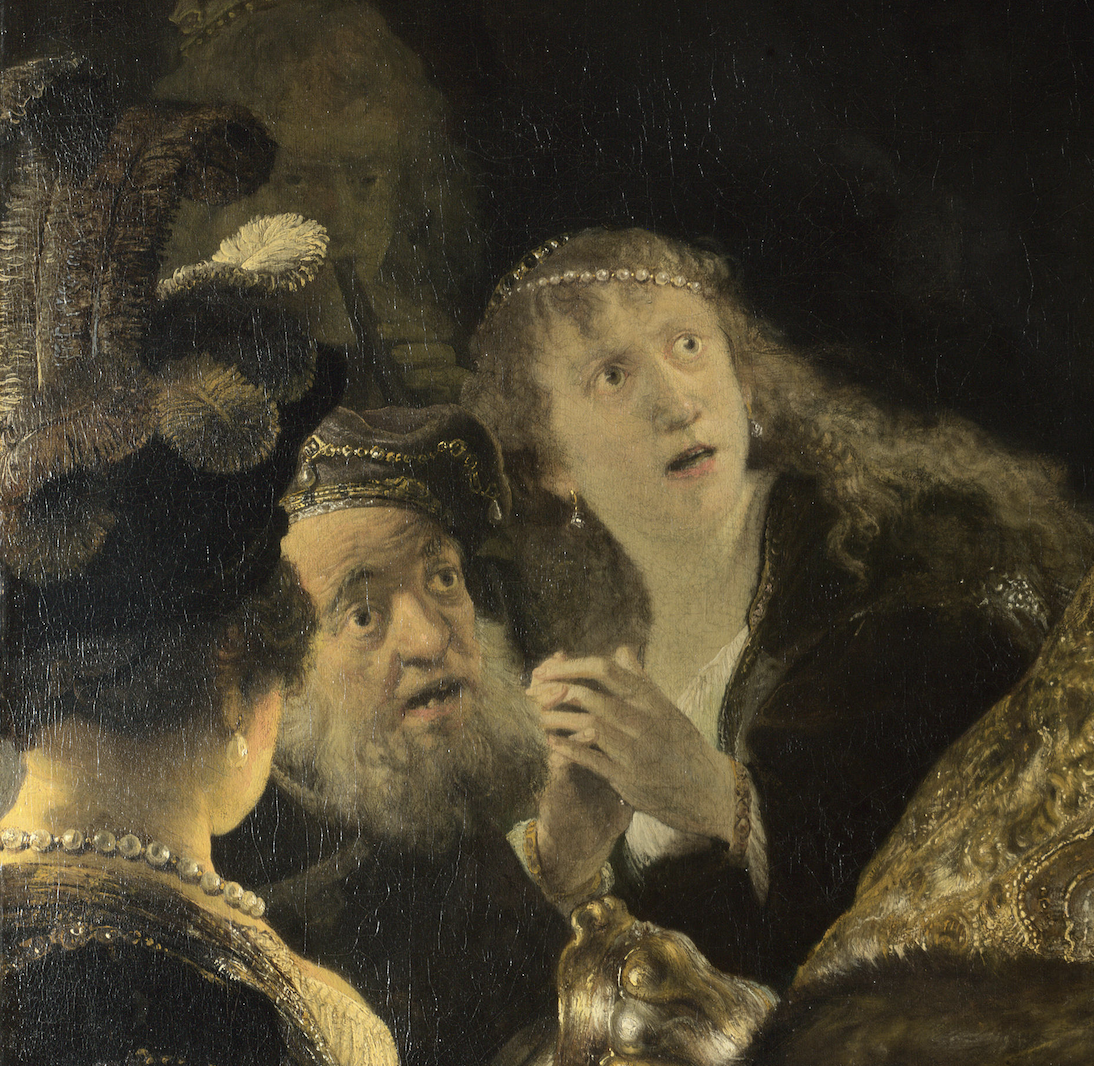
Symbolism and Detail
The painting is replete with symbolic elements. The writing on the wall itself is not just a biblical sign, but also an artistic challenge. Rembrandt carefully studied the characters, rendering them in a stylized script that hints at ancient Hebrew, reflecting his attention to scriptural authenticity. The opulent attire of the figures, including the king's own regalia, represents temporal power and wealth, which are rendered moot by the message from the divine.
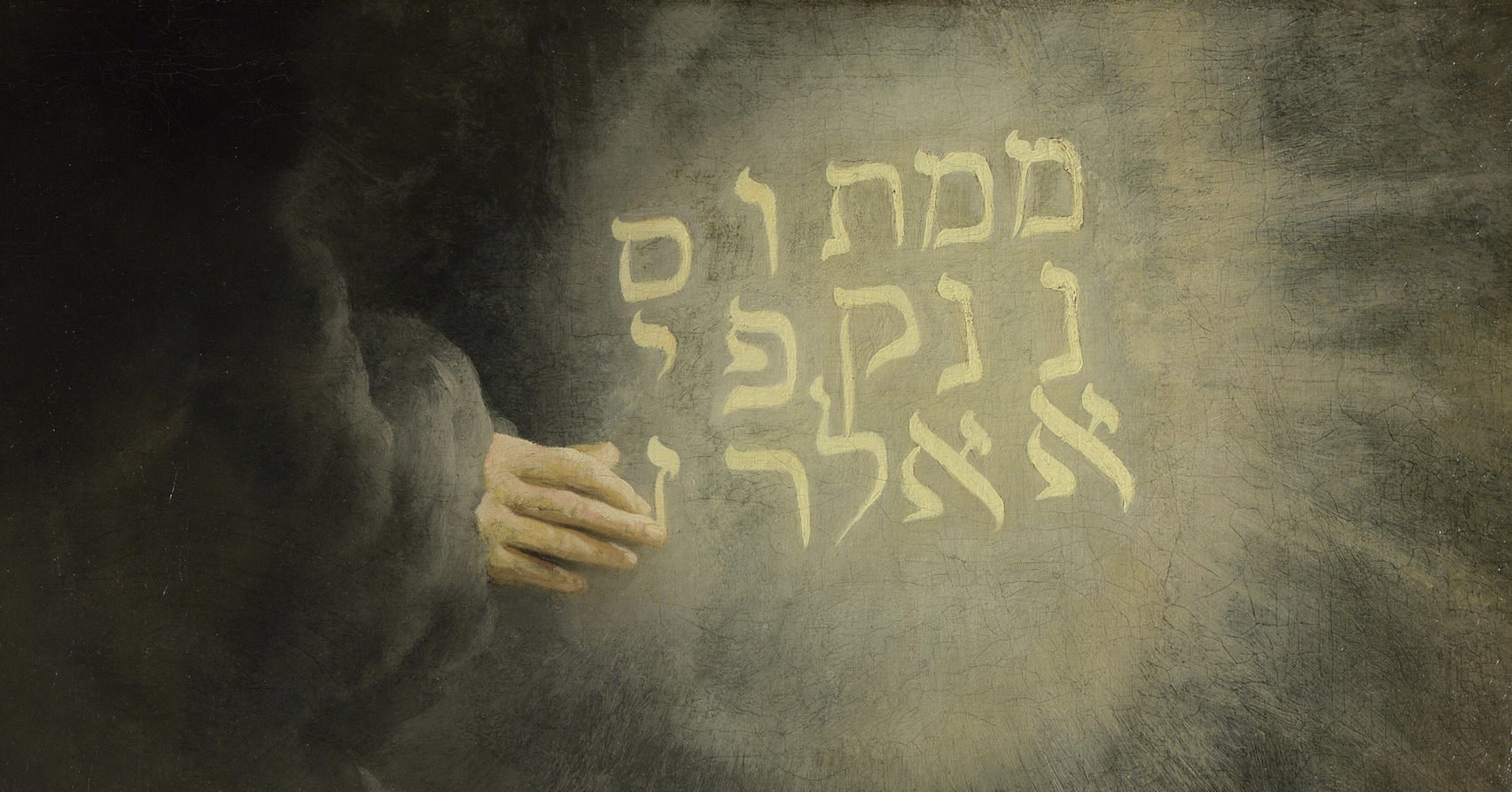
Rembrandt's inclusion of details such as the utensils taken from the Temple adds layers of meaning to the scene, underlining the sacrilege and arrogance of the Babylonian king. The varied expressions of the feast’s attendees, from confusion to outright terror, display Rembrandt's skill in capturing human emotion and the psychology of the moment.
Belshazzar's Feast stands out as a testament to Rembrandt's narrative genius and his ability to capture the essence of biblical stories in a way that is emotionally resonant and visually arresting. This work of art embodies the tension between darkness and light, between the finite power of man and the infinite judgments of the divine. With its dramatic flair and meticulous detail, Rembrandt's painting continues to fascinate scholars, art lovers, and casual viewers alike, solidifying his status as one of history's greatest painters.
Теги
art, Rembrandt.
